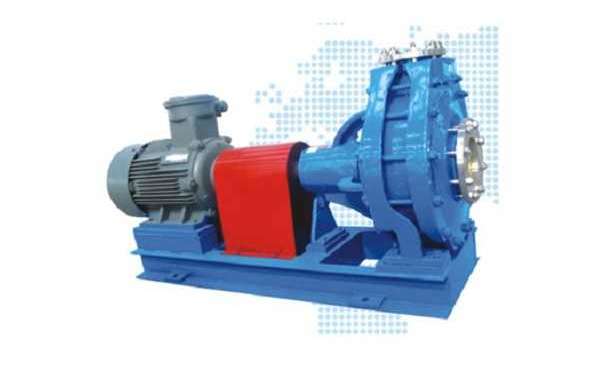The isolation sleeve of the stainless steel magnetic pump is also called the shaft sleeve. The isolation sleeve is the perfect pressure-bearing part to keep the magnetic pump leak-free, and it is also a static sealing spacer between the inner and outer magnetic rotors.
In the stainless steel magnetic pump, the rotating shaft does not protrude from the fixed pump body, and the shaft sealing device is replaced with an isolation sleeve to prevent the leakage of high-pressure liquid in the pump body, while preventing the leakage of high-pressure liquid in the pump body, and preventing air from entering In the pump body, the stainless steel magnetic pump is provided with a sealing device, and the shaft and the pump body are isolated by a shaft sleeve instead of the shaft sealing device.
What are the issues that should be paid attention to in the selection of materials for stainless steel magnetic pump isolation sleeves?
1. The isolation sleeve is a pressure-bearing component that keeps the stainless steel magnetic pump leak-free, and also acts as a static sealing isolation element between the inner and outer magnetic rotors.
2. As a sealing part, the isolation sleeve mainly bears the internal pressure generated by the pump during operation. Considering the strength, it is generally made of metal materials. Since the isolation sleeve works in a high-speed alternating magnetic field, it produces a serious "power generation" effect, that is, the magnetic eddy current loss, the better the electrical conductivity of the material, the larger the cross-sectional area, the higher the rotational speed, and the greater the eddy current loss.
3. Therefore, the isolation sleeve should try to choose a non-ferromagnetic material with a relatively high resistivity. Commonly used metal materials are austenitic stainless steel, titanium alloy, Hastelloy and so on. Taking stainless steel as an example, under the working condition of stainless steel magnetic pump 1900r/min, the eddy current loss is as high as 15%~20%. Hastelloy has high resistivity and high strength, which can effectively reduce eddy current loss, but the material cost is too high, which limits the application. Non-metallic materials can reduce or even completely avoid eddy current losses.
4. If the working pressure is not high, high-strength engineering plastics can be selected. There are isolation sleeves made of ceramic materials abroad with almost zero eddy current loss. However, ceramic materials are fragile, have poor mechanical and thermal shock resistance, complex processing, high price, and difficult assembly, so they have not been widely used.
5. The design of the stainless steel magnetic pump isolation sleeve often depends on the structural parameters and working conditions of the pump itself. If in high pressure, high temperature, and highly corrosive medium, only the precipitation hardened austenitic stainless steel material that cannot be magnetized and has a high resistance can be used, the wall thickness of the material should also be calculated. From the formula of eddy current loss, it can be known that increasing the resistance can reduce the loss. Increasing the path length of the eddy current, reducing the wall thickness, and increasing the resistivity are ways to increase the resistance.
At present, stainless steel magnetic pump isolation sleeves are made of three kinds of materials: titanium alloy, Hastelloy, and 316L. Compared with titanium alloy, it is better, but it also needs to be selected according to the characteristics of the medium.
stainless steel magnetic pump https://www.luolintec.com/IH-stainless-steel-chemical-pump.html







